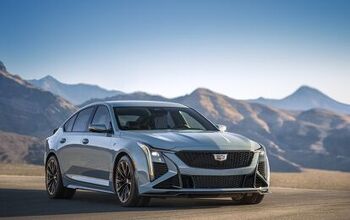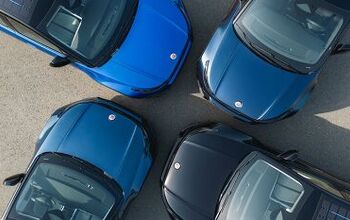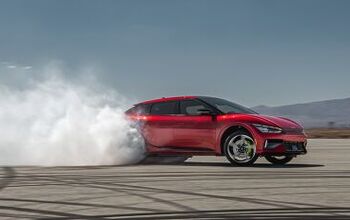Do You Believe Solid-State Batteries Are Really Right Around the Corner?

Despite all-electric vehicles having certain advantages over conventional combustion automobiles, they also have some clear drawbacks that have stifled their adoption rate on some of the world’s largest markets. Solid-state batteries are supposed to close the gap between the two and are allegedly approaching mass-market applications. However, we’ve been hearing a lot about them for years with the relevant voices citing little in the way of tangible progress.
As of now, solid-state batteries have been limited to small devices that are designed to run for exceptionally long periods of time. But they’re exceedingly rare. Most applications have been limited to personal medical devices and the occasional electronic gizmo reserved for the kind of people who buy five-figure designer watches.
But the automotive industry has been talking about how the technology is poised to accelerate electric vehicle sales immediately after implementation for over a decade. They’ll allegedly be able to store far more energy than lithium-ion units — while also being smaller, longer lasting, and quicker to recharge.
They’re even supposed to be safer due to not needing to rely on the liquid chemical reactions used by traditional batteries or the combustible liquid fuels needed by traditional motor vehicles. Punctured lithium-ion batteries occasionally see events of thermal runaway, resulting in flash fires that are exceedingly difficult to put out. But using solid material, rather than volatile liquid electrolytes, is alleged to mitigate this problem.
According to Automotive News, the industry has collectively been targeting 15 minutes or less for batteries with about 300 miles of range in terms of recharge speeds. Solid-state batteries, which the outlet claimed were "just over the horizon," are assumed to be capable of the task and without the kind of energy degradation one normally associates with rechargeable batteries.
While numerous companies are hard at work on developing an application for automobiles, they’re also behind schedule. Promises about solid-state batteries have been tragically reminiscent of industry statements made about autonomous driving. Automotive News, noted that Toyota ( which is arguably the automaker dumping the most money into developing the technology) plans on releasing a commercial unit by 2028, noting that it had originally promised to deliver something by 2025.
But we can go further back than that. In 2017, Japanese media was reporting that Toyota would field a long-range EV using solid-state batteries by 2022. Nissan has likewise made promises that it would see solid-state EVs by 2028 and we’ve witnessed similar claims coming from BMW, Ford, General Motors, Mercedes-Benz, Hyundai, Honda, and Stellantis.
China’s NIO suggested it would launch a semi-solid-state battery (merging the concept of solid-state and lithium-ion) that would deliver over 1,000 km of range by 2023.
Volkswagen, working with QuantumScape on solid-state batteries, also expected to have a commercial breakthrough by 2023. But the claims on the unit were pretty wild. Some estimated that the resulting product would allow VW-branded electrics to drive several thousand miles before needing to be recharged — perhaps showcasing how often novel technologies are undermined by hype.
To be fair to Toyota (and some of the other brands) forward-looking statements are always issued with a caveat. Just because a company is working on something and sets a target date doesn’t mean that’ll be when the new product drops, let alone in large numbers. But the public is still being inundated with media suggesting “game-changing technologies” are just moments away. Automakers undoubtedly know this and are likewise aware that such news helps pump up their share price, so they often play along.
As for how close we really are to seeing new types of batteries totally transform the EV landscape, Automotive News shed some light on some of the obstacles the industry is facing:
The science is there. Solid-state batteries already power medical devices, RFID products and smart watches. However, scaling up the battery size and making it hardy enough to survive the harsh automotive environment greatly increases development and production challenges.
Chief among them are overcoming battery electrode degradation for improved longevity, reducing manufacturing complexity and establishing a secure, stable supply chain. Solid-state batteries use the same chemistries as conventional lithium ion batteries and thus are subject to the same critical minerals constraints.
A major dependability issue stems from the propensity of solid-state batteries with graphite anodes — the most common type — to grow needle-like structures called dendrites when lithium moves to the anode from the cathode. Dendrites can accumulate and grow in the lithium metal that plates the anode with each charging cycle, weakening it and possibly short-circuiting the cell by piercing the barrier separating the anode and cathode.
A second issue is that the electrolyte material used for solid-state batteries tends to crack, swell and break apart as the number of charging cycles increase. Manufacturing and keeping the electrolyte under high pressure is the most common workaround, but that requires tremendously sophisticated and expensive manufacturing equipment.
"The technology works at small scale, but getting it to the large capacities necessary for cars is a challenge," Andrew Colclasure, a battery research scientist at the National Renewable Energy Laboratory in Golden, CO, told the outlet.
The above also shows how the material shortages, assumed to impact high-density batteries for the foreseeable future, will remain an issue for solid-state units. This technology likewise fails to address the energy production needed to accommodate transitioning entire nations over to EVs combining the dominant mode of transportation — and that’s before we’ve even started addressing how long it would take to establish the necessary supplier base to even build new types of batteries.
While we cannot call solid-state batteries vaporware, their use in the automotive realm has bordered on nonexistent. Some automakers have even started suggesting that there’s not much of a point in pursuing them now that lithium-ion applications have improved.
In 2021, Daimler Bus (owned by Mercedes-Benz) actually offered the eCitaro with solid-state batteries manufactured by the Bolloré Group. However, the units were Lithium Metal Polymer units designed exclusively for use in warm weather. By 2023, the company had changed its tune and said that improvements in Nickel Manganese Cobalt batteries had made the preexisting solid-state batteries (which were a much older design) less relevant. Granted, these weren’t the latest and greatest. But the example shows how advancements in preexisting technologies can sometimes upend progress being made elsewhere.
[Image: JLStock/Shutterstock.com]
Become a TTAC insider. Get the latest news, features, TTAC takes, and everything else that gets to the truth about cars first by subscribing to our newsletter.

Consumer advocate tracking industry trends and regulations. Before joining TTAC, Matt spent a decade working for marketing and research firms based in NYC. Clients included several of the world’s largest automakers, global tire brands, and aftermarket part suppliers. Dissatisfied, he pivoted to writing about cars. Since then, he has become an ardent supporter of the right-to-repair movement, been interviewed about the automotive sector by national broadcasts, participated in a few amateur rallying events, and driven more rental cars than anyone ever should. Handy with a wrench, Matt grew up surrounded by Detroit auto workers and learned to drive by twelve. A contrarian, Matt claims to prefer understeer and motorcycles.
More by Matt Posky
Latest Car Reviews
Read moreLatest Product Reviews
Read moreRecent Comments
- Pablo Even with A/C, all that glass área Is going cook the carriers in AZ, So Cal, NV, TX, FL, etc. Is the sunvisor going to be two feet vertical? I can see traffic signals getting lost in the sun, too. I would have learned toward a hybrid modern small pickup LLV, maybe on a Ranger chasis and Escape powertrain with a modern safety suite. Escape hybrids are well proven in NYC taxi fleets.
- Wolfwagen I used to be interested in spy shots but since every vehicle looks the same now, who cares? I will say that manufacturers that are contemplating bringing new models from other markets ( think Ram and the 700) are interesting, but that's about it
- Daniel J I'm fine with this. There isn't a valid reason the Envision, for example, can't be made here. It's similar to the Terrain. Why not build it right next to it? Same goes to the Nautilus? Build it next to the Edge.
- Dave M. Looks like a platypus....
- Teddyc73 I'd buy a new Chrysler in a heartbeat to go with my Ram 1500. Unfortunately they have no products that fit what I need (make that ANY products). While the Pacifica is a great vehicle, I'm single, I don't need a minivan. I'd like a small or midsize sedan or even a small SUV. I loved the style elegance and vibe of late 90s and early 2000s Chryslers. I owned several. My 98 Concorde and 01 LHS for example were a fantastic beautiful cars. One was forest green and the other dark garnet. Actual colors, not dull dreary greys. I'm here Chrysler, right here, ready to buy. Give me a product!

































Comments
Join the conversation
To be honest it doesn't matter to me what kind of vehicle you own. The problem with BEVs is they have to be recharge. At this time the infrastructure isn't there yet. Using other peoples labor to make it a reality is immoral. If people want to volunteer to invest their money than go for it, but don't use mine. Bevs drive up the cost energy that we all need to survive today. We need to embrace nuclear energy plants as away to produce electricity to make electric energy affordable for all.
I agree if you have solar, but not everyone does and can afford a quality solar system with back up. Otherwise you have to rely on public charging. I wouldn't want to live in a major city and wait 10 minutes yet 30 minutes for charge. Unless I'm packing. And the infrastructure for public charging is very no quality still. Why should my labor (taxes) be used to benefit others, they didn't pay for my gas station to be built. The old argument about tax subsides doesn't wash because electricity is an necessity and windmill and solar farms get subsides also. I don't know why all the Bev owners don't get together form a company to build renewable energy using their money. Most of all Bevs owners are wealthier than the average citizen.